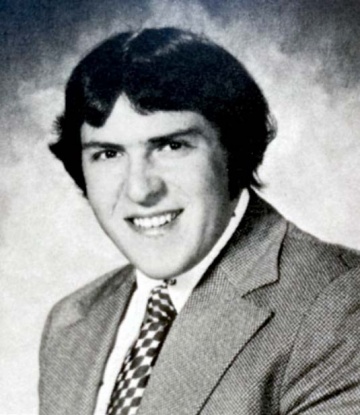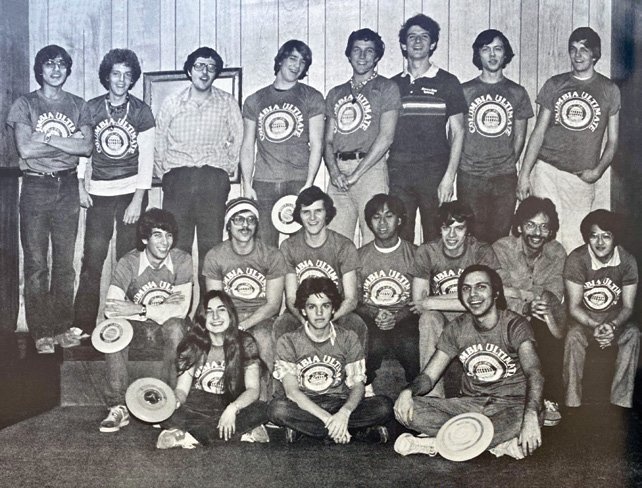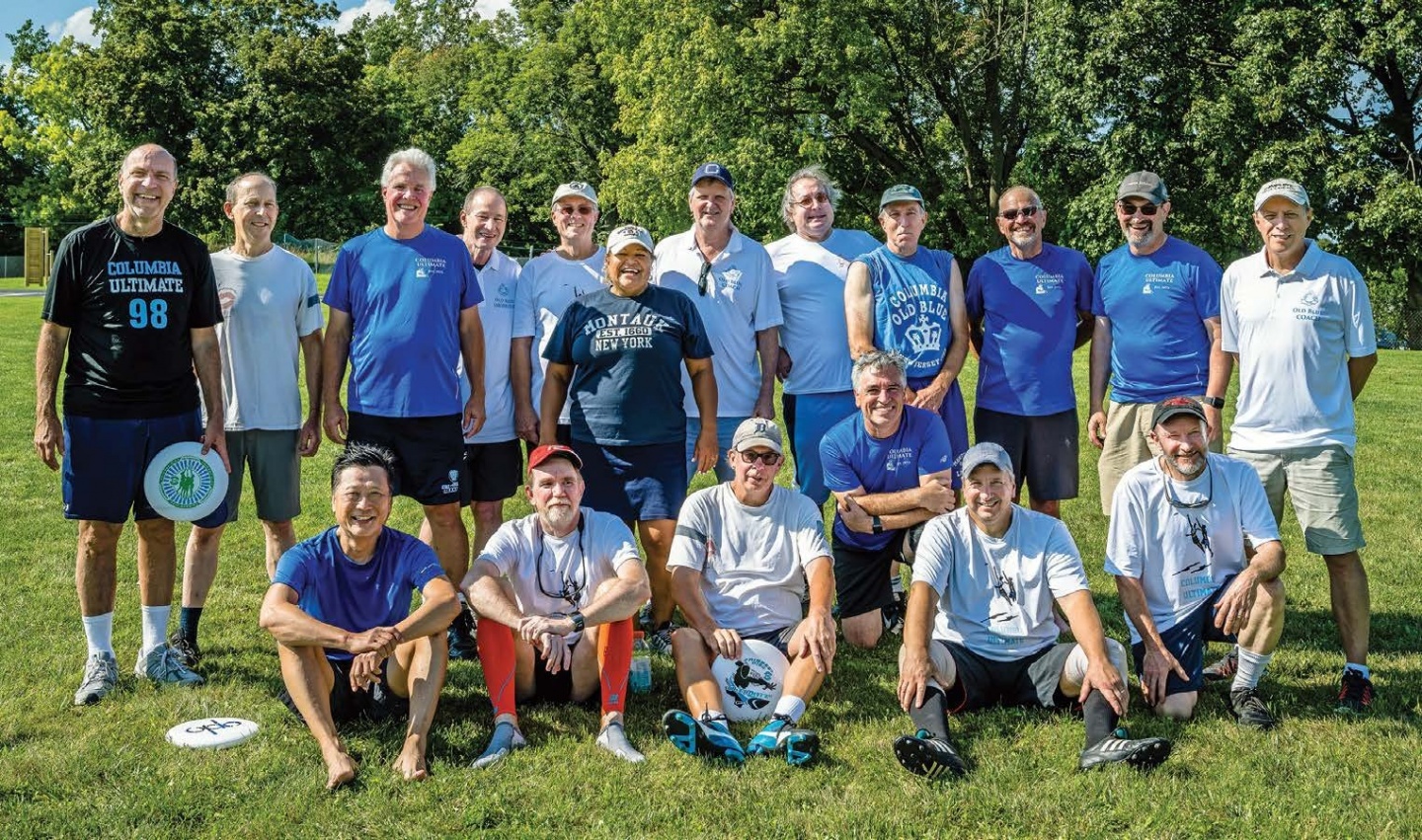Decades later, an era of Ultimate Frisbee players remains a team
Columbia College | Columbia University in the City of New York
Decades later, an era of Ultimate Frisbee players remains a team
Every September for the last 35 years, alumni from the early days of Columbia’s Ultimate Frisbee team reunite to eat V&T and play the game that brought them together. Or at least a version of it. As Stephen Kane ’80, LAW’83, who was on the team from 1976 to 1983, tells it with a laugh, “Two or three years ago, we decided that Ultimate is not the best for 60-something- year-old people.”

David Meyer ’77
Last year marked the 50th anniversary of Meyer’s contribution: The men’s Ultimate Frisbee team (now called Uptown Local) was born in fall 1973. The sport had been invented by students at Columbia High School (no relation) in Maplewood, N.J., five years earlier in 1968. Ultimate is played similarly to soccer or football, but with a Frisbee instead of a ball and with limited physical contact; points are scored by flinging the disc to a teammate in the opposing end zone.
Critically, the game was created with a loose, hippie ethos — as “an anti-sport,” one Columbia H.S. alumnus told The New York Times in 2008. To that end, Ultimate is played without referees; instead, it is guided by “Spirit of the Game,” a principle that places responsibility for fair play on the player. Competitiveness is encouraged, but never at the expense of respect, adherence to the rules or the joy of playing.
Ultimate became an intercollegiate sport in the early ’70s, as Columbia H.S. graduates went on to found teams at their new schools. Meyer was one of them, bringing the game to the College as a club sport in his first semester. It took a while to catch on — Columbia’s team didn’t notch a win until September 1976, when they defeated Yale. (That happened to be Kane’s first game. “A coincidence? I think not,” he jokes.)

Team photo from the 1978 yearbook.
The team kept the momentum going and started to gain traction. “What we realized was, we had achieved a degree of athleticism that was consistent with our collective abilities,” Silverschotz says. Kane agrees: “Columbia was a more athletic team than most teams were, that was our strength.”
Co-captains Kane and McManus provided solid leadership. “Every time we would score, Jerry would huddle the team and say, ‘Let’s just get one more,’” Silverschotz recalls. “And that’s how we built each game — point by point, being consistent, working together.”
By spring 1978, it was the best of times: Columbia Ultimate was undefeated in the regular season. A major victory was the 22–15 defeat of Rutgers, who were then top ranked nationally; Kane smiles thinking back on that David and Goliath moment. “For us to go in there and blow them out, that was a huge, huge upset,” he says.
Befitting that moment of glory, photos of the team practicing on South Field appeared in the sports section of The New York Times. Then suddenly, in September 1978, it was the worst of times: Their beloved founder Meyer suffered a cerebral aneurysm and fell into a coma. He passed away in 1983.
“Buddha was an incredible guy. He was a great player,” Kane says. “Everybody knew him. They did these Frisbee tournaments at the Rose Bowl in the ’70s, the top players in the country — everyone knew him. He had an unusual throw, no one else could do it: an air-bounce wrist flip. He had perhaps the finest of those ever.”
“He was one of a kind,” Silverschotz says.
The team honored Meyer with a terrific fall 1978 15–3 season. The highlight was the season finale victory against archrival Princeton; the team pranked their nemesis by arriving to the game 90 minutes late, in a hearse they had purchased for the occasion for less than $1,000.
And now, decades later, players from that era — the “Old Blue” — faithfully come back to Morningside Heights every September to keep Buddha’s memory and their team spirit alive. Silverschotz’s voice catches when he talks about the reunions: “When you’re on a team and you have common experiences with your teammates, your ability to relive them — to break into peals of hysterical laughter recollecting who did what to whom when — it allows you to travel back to those years,” he says.
“When you’re with your friends that you’ve been friends with for 40-plus years, it’s easy to feel young again.”

Top row, left to right: Mark Silverschotz ’78; Christopher Betts ’84; Robert Kennelly SEAS’81, BUS’84; Jerry McManus ’89, GSAS’97; Christopher Schmidt ’81, GSAS’83, BUS’85; Noemi Cicconi; Stephen Kane ’80, LAW’83; Joseph Strothman ’84; Michael Forlenza ’78; Leslie Fritzemeier SEAS’84; Stephen O’Keefe ’81; and Mauricio Matiz SEAS’84. Bottom row, left to right: Hyung Lee ’84; James Drennan ’84; Paul Tvetenstrand SEAS’82, SIPA’82, LAW’83; Philip Hirschhorn ’84; Ernest Cicconi ’81; and Jeffrey Coffin SEAS’83.
COURTESY STEPHEN KANE ’80, LAW’83

Published three times a year by Columbia College for alumni, students, faculty, parents and friends.
Columbia Alumni Center
622 W. 113th St., MC 4530, 4th Fl.
New York, NY 10025
212-851-7852
cct@columbia.edu

Columbia Alumni Center
622 W. 113th St., MC 4530, 4th Fl.
New York, NY 10025
212-851-7488
ccalumni@columbia.edu